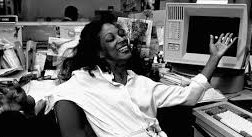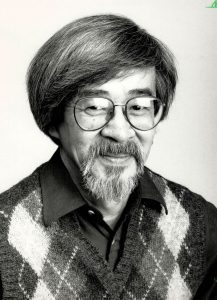
Have you ever read a story in a magazine and wondered who the reporter was who wrote it? Well, I have, often. More specifically, imagine that you were reading an edition of Sports Illustrated a few weeks back. You saw a story that caught your attention written by Drew Ortiz. If you then searched the Sports Illustrated website to find out more about Ortiz, here’s the message you’d have found:
“Nowadays, there is rarely a weekend that goes by where Drew isn’t out camping, hiking, or just back on his parents’ farm,” the SI site said.
Well, the mystery around Drew Ortiz and his SI story intrigued reporters at a New York-based science and technology publication called Futurism. They did some checking and discovered that the photo of Drew Ortiz could be traced to an Artificial Intelligence image website with the description: “neutral white young-adult male with short brown hair and blue eyes.”
Futurism further reported that Sports Illustrated published pieces called “product reviews” and attributed them to fake author names with completely fabricated biographies. In other words, it proved that neither the reporter Drew Ortiz nor the story Ortiz is supposed to have written were real. Both were generated from AI technology. Both were entirely faked.
When challenged on the apparent fabrication, Arena Group, the owners of Sports Illustrated, blamed the suspicious content and the mystery around Drew Ortiz and another writer, Sora Tanaka, on a company called AdVon. Then, Arena Group dug itself into a deeper hole when it claimed the reason for the fake names was to protect the identities of the real writers.
The notion that sports writers needed pseudonyms to write product reviews is ridiculous. Worse, the fallout has devastated a sports media brand known for its journalistic excellence for generations.
In any case, the whole episode has outed Artificial Intelligence as just another name for fake news. So, why should we care whether Ortiz is real or not, or whether Sports Illustrated faked the stories?
Well, the same reason we should worry that an investigative journalist might invent sources to enhance a career. Or that a columnist might lift material from other columnists without crediting them. Or that a respected book reviewer might steal the words of another critic and present them as his own.
All three have happened.

In September 1980, Janet Cooke, a reporter for the Washington Post, told her editor she’d found an amazing story from the streets of D.C. She wrote a sensational series about a heroine addict, who was selling the stuff to other addicts. Cooke alleged that the pusher, Jimmy, was only five years old. The series earned her a Pulitzer Prize in 1981. It turned out that the story was entirely made up. She forfeited the Pulitzer, was fired and disappeared.

The case of Globe and Mail columnist Margaret Wente committing plagiarism on several occasions was investigated by Media Culpa blogger Carol Wainio; she pointed to a number of instances in which she said Wente lifted quotes from published sources without attributing them.
But I think the saddest instance was that of Ken Adachi. Among Canada’s most recognized literary critics, when challenged in the 1980s, he admitted to plagiarizing three paragraphs from a book review in Time magazine; while he stayed on at the Toronto Star, he later took his own life.
By coincidence, this week, a journalism student from Centennial College (where I taught news reporting for 18 years) called for an interview about a report she was compiling. She asked if I would answer questions about integrity in journalism.
I told her, while I had taught a journalism law and ethics course at Centennial for a few years, my answers were purely my own thoughts on the issue. I cited the cases of Cooke, Wente and Adachi.
I explained in Janet Cooke’s case – fabricating the five-year-old addict story – that there had been pressure on her, partly because she was a person of colour, to produce something sensational to bring her and the paper attention and praise. “Jimmy’s Story” hurt them both.

Margaret Wente claimed she had merely forgotten to attribute her sources. Sometimes, delivering columns not just once a week, but every other day, puts a great deal of competitive pressure on a writer; under the gun, she may have slipped up and paid the price.
Ken Adachi created some of the most remarkable review copy during a stellar career at the Toronto Star; but he was crushed by the intensity of the plagiarism controversy and could find no other way out.
Faking it in journalism hurts its author, its publisher, the profession and most important of all, the pursuit of truth.